
How to create a product spec for flawless execution
Writing an effective product spec is challenging in the age of distributed teams and async collaboration. Here’s how to keep everyone on the same page.
Your product specification doesn’t have to be a Pulitzer-worthy page-turner. But it must get the point through and align your team — otherwise, information gaps and misunderstandings can impact your timeline and product quality.
A product spec (or product requirements document) is critical in product management and development. It sets the foundation for successful execution. As Ben Horowitz said, “Written communication to engineering is superior because it is more consistent across an entire product team, it is more lasting, it raises accountability.”
A written document provides team members with a holistic understanding of the product. They can reference the document anytime to understand their roles in the development process and verify that they’re heading in the right direction.
It's easy to fill in the blanks in a product specification sheet, but how do you communicate the information effectively to support flawless execution — especially in the age of distributed teams and asynchronous communication where you can’t review the document with your team in person to flesh out all the nuances?
While text-based communication is great for listing the facts, it may not capture the nuances behind your vision. The disconnect could lead to gaps in information and misalignment with the product strategy.
Let’s look at how you can create an effective product spec for the modern product development team to bring your idea and vision to life.
Start with the final product in mind
The biggest mistake people make when writing a product spec is turning it into a laundry list of features. But listing out the functionalities is just one part of the document. Understanding the purpose of a product spec can help you shape the content and position the information to support the development process.
A product spec is a blueprint that outlines key requirements to guide the development of a new feature or product. It contains a technical description, performance specifications, and technical standards. It also communicates contextual information, such as target users and business requirements.
The document should be concise and specific but not overly technical. It should tell your developers what they need to build, what the goals of the new product or functionality are, and what success looks like.
An effective product spec provides the team with clarity so they can stay on track, streamline the development process, and avoid miscommunications that lead to errors and delays.
A 3-part framework for creating a product spec for software teams
There are many ways to structure a product spec sheet depending on various factors. Here’s a framework we use at bubbles to create a product spec that works well for our distributed team.
Problem definition

In this first step, we define the problem we aim to solve. We identify the audience, research our competitive set, and set success criteria.
You must understand your users and their challenges, and one of the best ways to get insights is through user interviews. Including summaries of these conversations in your written product spec is helpful, but often not enough to give context and communicate the nuances of the problem.
We use bubbles to share user interview snippets to help team members better understand how our target audience talks about their challenges and desired outcomes. By combining verbal communication with non-verbal cues, we can better interpret the feedback to derive accurate insights.
Solution definition

Next, our team creates visual presentations to translate audience insights into a series of user interfaces. The mock-ups set the stage for successful execution by defining the steps users take to achieve a specific outcome using our product.
However, presenting and providing feedback on visual elements via text is easily one of the most frustrating challenges of async communication. Why write a novella if you could just point at the screen and narrate the user flow or share your thoughts in 90 seconds?
That’s why we love complementing these visual representations with bubbles to discuss early design ideas and share feedback. We also create bubbles to walk through the final design for our engineers so they can have a holistic understanding of the user experience — which can be hard to grasp just by looking at a series of static wireframes.
Product delivery

Next, our team creates visual presentations to translate audience insights into a series of user interfaces. The mock-ups set the stage for successful execution by defining the steps users take to achieve a specific outcome using our product.
But written communications often fall short in covering the details of a build, documenting technical setup, or logging technical debts. Meanwhile, describing why a complex user flow isn’t working how you envision it in written format is a misunderstanding waiting to happen.
Our team uses bubbles to streamline collaboration throughout the development process to share feedback, record the technical details of a build, and acknowledge technical debts. It brings everyone onto the same page so team members can pick up where others have left off without missing a beat.
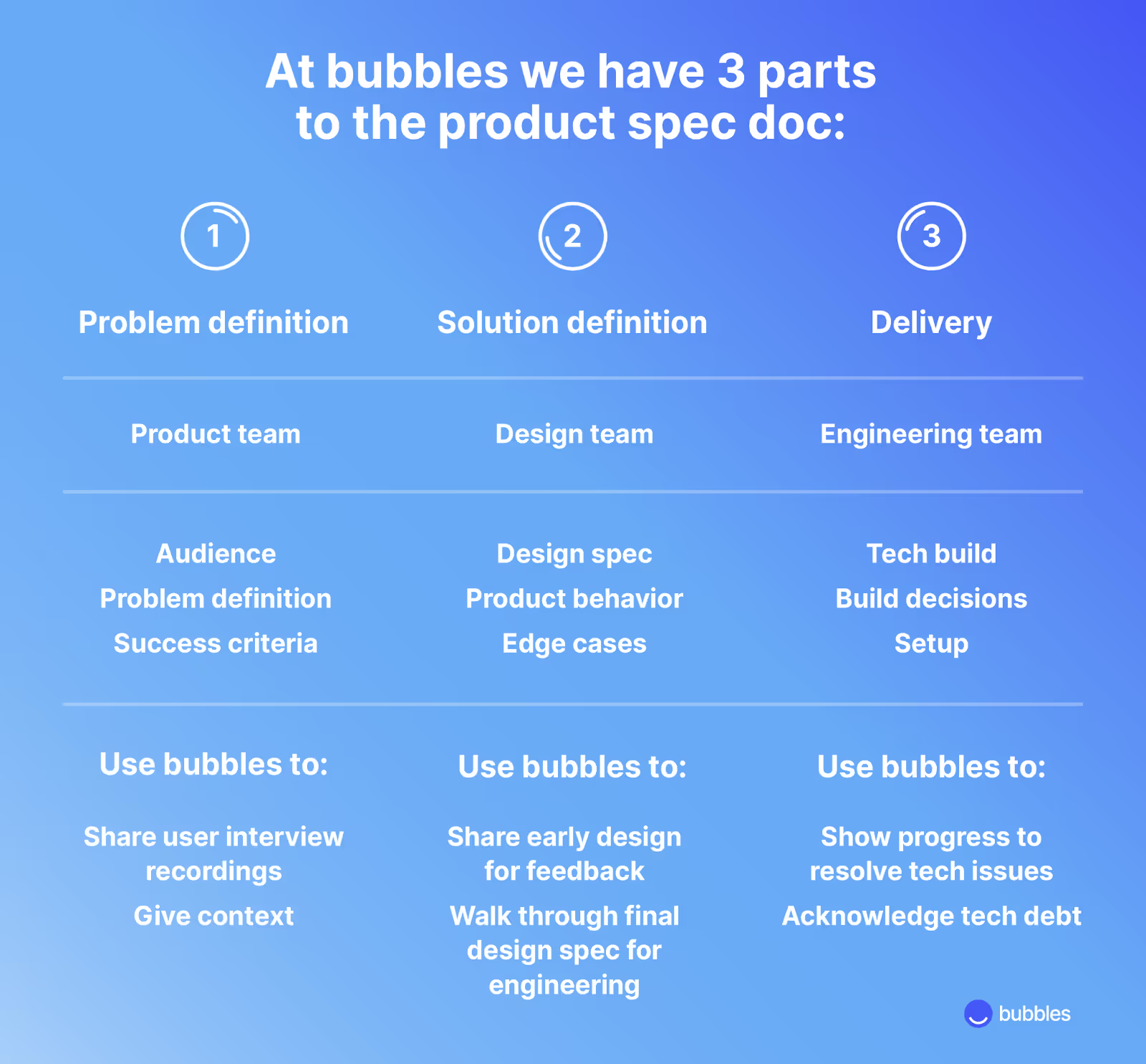
How to create an effective product spec document
Ready to roll up your sleeve? Follow these steps to gear your product spec in the right direction:
Define the problem
Clearly communicate the target users’ expectations, how the product or feature will meet business needs, and the project's objectives to ensure alignment with the product strategy.
If you have an existing product, review customer feedback (e.g., complaints, questions, suggestions, and feature requests) to understand users’ pain points and identify gaps your product needs to fill.
Add quotes and video snippets of users speaking to the problem in their own words. For example, we record user insights with bubbles and tag the key insights in the recording for future reference.
Research the market
Gain a deeper understanding of your target audience. For example, do they use a similar product? What kind of user interface (UI) design do they prefer? What tone and voice will resonate with them? What content do they consume? For instance, a UI designed for Gen Z probably won’t work well for Boomers.
Also, analyze your competitors and consider how you can create unique features to address unmet needs and position them differently to differentiate your product in the market.
You can add context by showing screenshots and video snippets of the UI you are highlighting. At bubbles, we share weekly user and competitive insights across the team by recording our screens and describing the experience.
Get input from all stakeholders
Share your initial idea to get input from stakeholders in the company. Structure the process so everyone feels like they can contribute equally and become more invested in the project when they start working on it.
Create a bubble to share the product idea with stakeholders. They can view the information on their own schedule and provide thoughtful input, which others can also comment on. You can collect feedback from distributed teams without timezone and scheduling challenges while giving everyone the space to share their best ideas — not just the first idea.
Identify essential components
You’d probably get a lot of feedback and new ideas from your bubble. Now it’s time to trim the fat and list functional specifications that support your vision, deliver the intended user experience, and ensure security and compliance.
Your document should be a well-organized document instead of a brain dump. Write a concise summary and provide context (e.g., business case, user stories) so the development team can better understand the purpose of each feature and how the specifications deliver the desired outcomes.
Create a prototype
After you have written up the first pass of the product spec, build a minimum viable product (MVP) or prototype to conduct user testing and validate your idea. Observe how your ideal audience uses each feature and navigates the interface to identify potential issues that may impact the user experience.
Pro tip: What you assume your target market wants may not be what they actually want, so beware of confirmation bias when you set up user testing.
Finalize your product spec
Based on the results of user testing, identify what works and what doesn’t. Which part of the user flow is too complicated? Do users get stuck at specific points in the user flow? Can you eliminate unnecessary components to streamline the user experience?
After you have addressed user feedback and finalized the spec, let stakeholders know what drove the final decisions and how you incorporated their input. You can simply add comments to the discussion threads in the bubble you created to share your product idea, et voilà! You keep everyone in the loop without complicating the process with another email thread.
Share the product spec with the development team
A great product idea isn’t great if your development team isn’t clear on how to execute it. An effective handover from the product and design team to the development team is a crucial yet often overlooked step in the process.
If project managers just send developers the product spec document, they may misinterpret the directions because the presentation lacks context and doesn’t address nuances around the project’s intention and vision.
A successful handover should include final design and user experience walkthrough. It helps close the information gap between the project manager, designers, and development team. While in-person or synchronous meetings (e.g., video calls) are great for collaboration, you can’t save the conversation for future reference.
Bubbles allows you to record the walkthrough and subsequence discussions all in one thread. Designers can go through the design files and explain how the product should look and work. Developers can ask questions and discuss the feasibility of the solution. In the end, you have a rich record of the handover to guide the development process.
I would like to have a different visual for the article that speaks to a framework that is associated with handover. either handover from product to design or design to development.
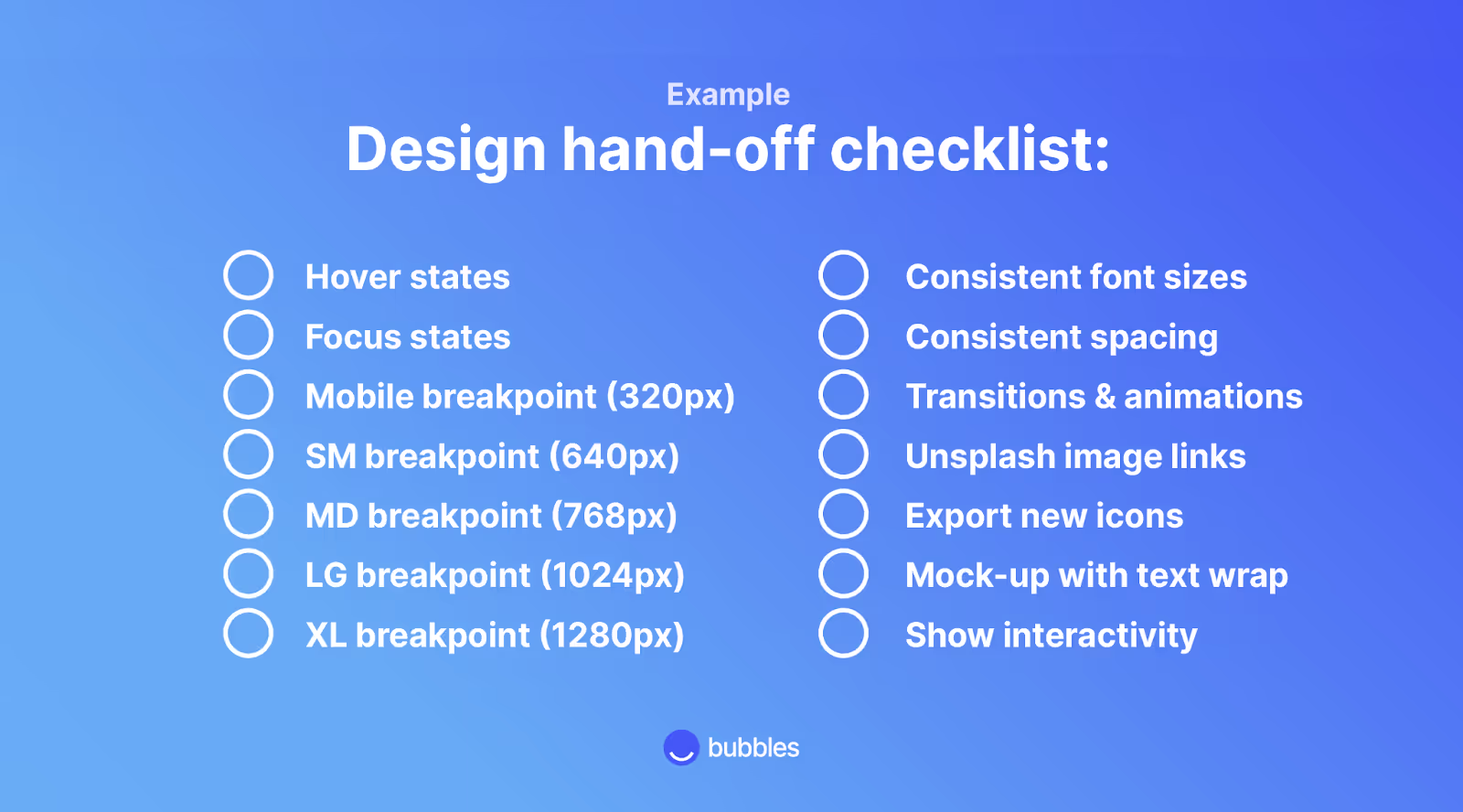
Effective product specs in the age of async work
A product spec document is essential to ensuring that your design and development team aligns with your vision and can turn it into action.
However, creating a good product spec can be challenging in an async work environment, which provides fewer opportunities for team members to understand the context and have two-way conversations as the document evolves.
A study by Dr. Albert Mehrabian on communication concluded that our tonality and body language contribute significantly to the effectiveness of our communication. Without seeing or hearing non-verbal cues, it’s easier to misinterpret the words.
As such, distributed teams need a conversational component to support the written document to understand the product idea, provide context, and share their input. Additionally, capture these exchanges within the context of the discussion for future reference.
Bubbles enables teams to collaborate using screen, video, and audio messages and respond on their own time to share the most thoughtful input — not what first comes to mind. Here are just a few ways to use bubbles to support the product spec creation process:
- Explain your idea once: Create a bubble to share your product idea and vision, then share the video with stakeholders for feedback without holding multiple meetings.
- Support collaborative brainstorming: Have team members share their thoughts and comments in the same bubble for a context-rich discussion. Everyone can chime in (without the chaos of a video call) to reach the best solution.
- Get everyone on the same page: Walk through the design spec with the development team to ensure that the final product delivers the intended user experience.
- Keep team members updated: Provide context as you make changes to the document so team members can realign with any new direction.
Effective communication and collaboration are critical for writing an effective product spec that gets everyone on board for flawless execution.
Bubbles supplements the written product spec document in the collaboration workflow to help you provide the context and clarity stakeholders need to achieve alignment across teams.
Plus, everyone can use bubbles right away without jumping through hoops. You don’t need to install any software or subscribe to any plan: Simply download the bubbles chrome extension, and you’re all set to make writing and contributing to product specs easier for everyone.
Make your
meetings matter
Loved and trusted by 100,000+ users:
- Automatically Record and Transcribe Meetings
- Extremely Accurate Notes, Summaries, and Action Items powered by AI
- Works with Zoom, Google Meet, and Microsoft Teams
- Save time and follow-up with quick async videos
Simply connect your work Google or Microsoft Calendar to get started.
Collaborate better with your team
Get your point across using screen, video, and audio messages. Bubbles is free, and offers unlimited recordings with a click of a button.
.avif)
Collaborate better with your team
Get your point across using screen, video, and audio messages. Bubbles is free, and offers unlimited recordings with a click of a button.
.avif)



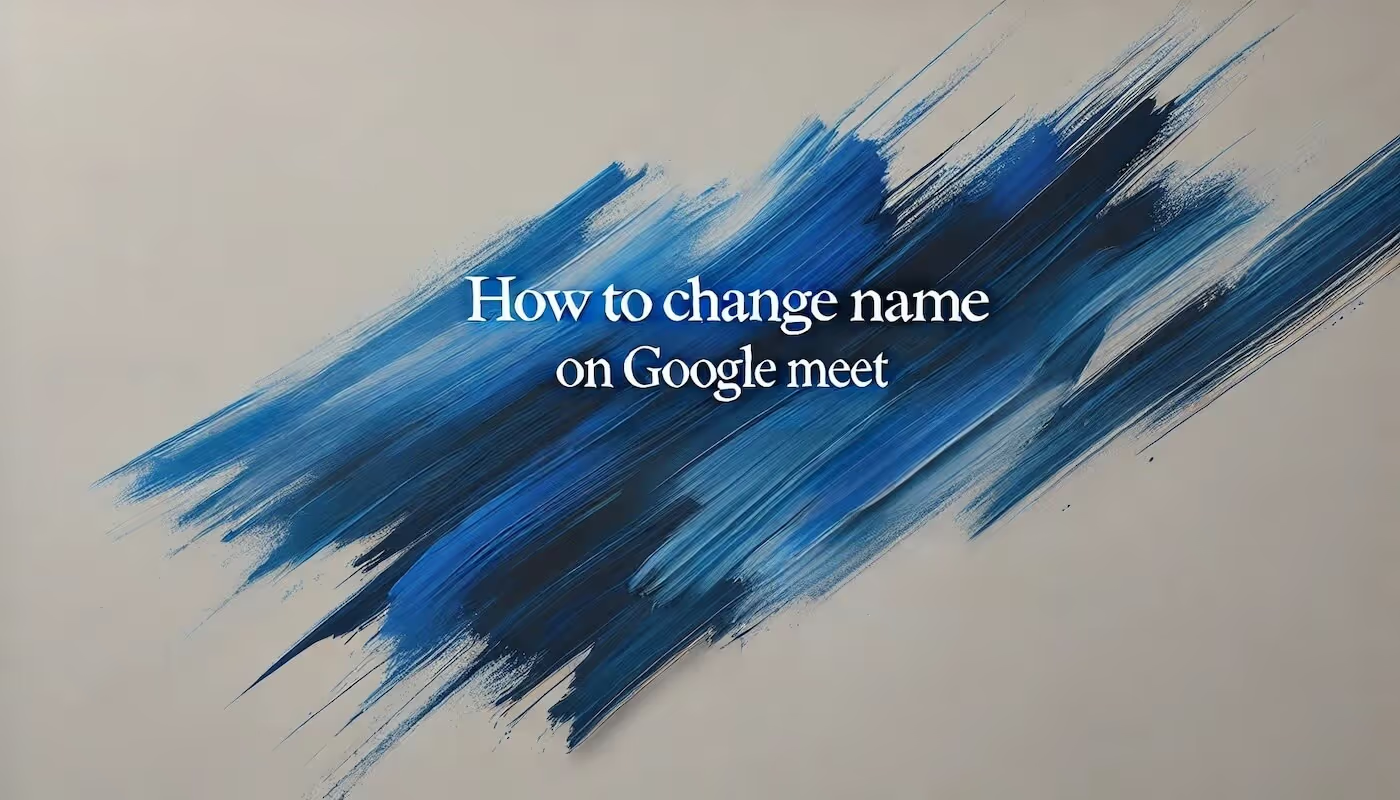


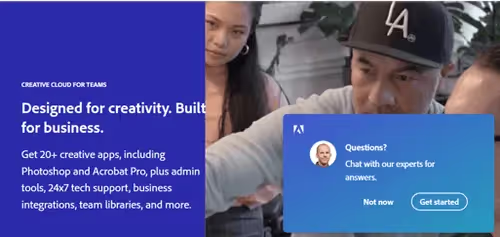



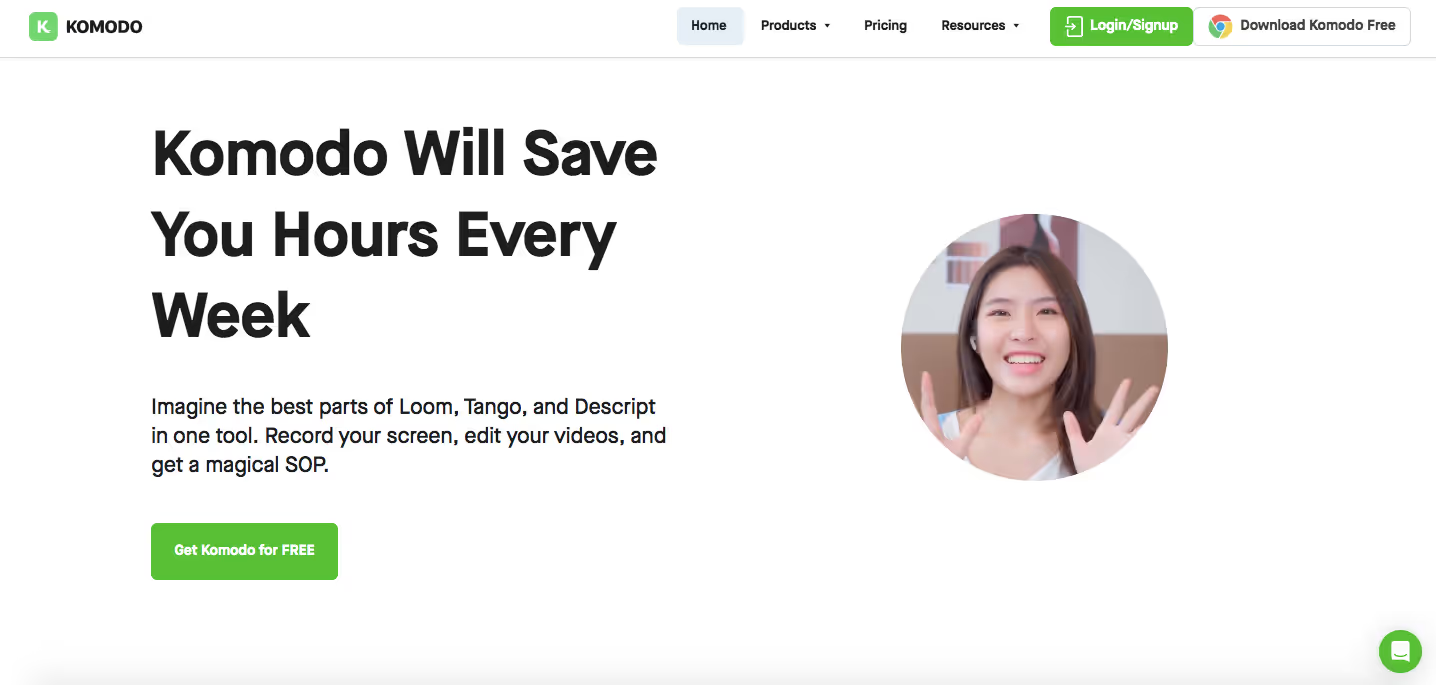
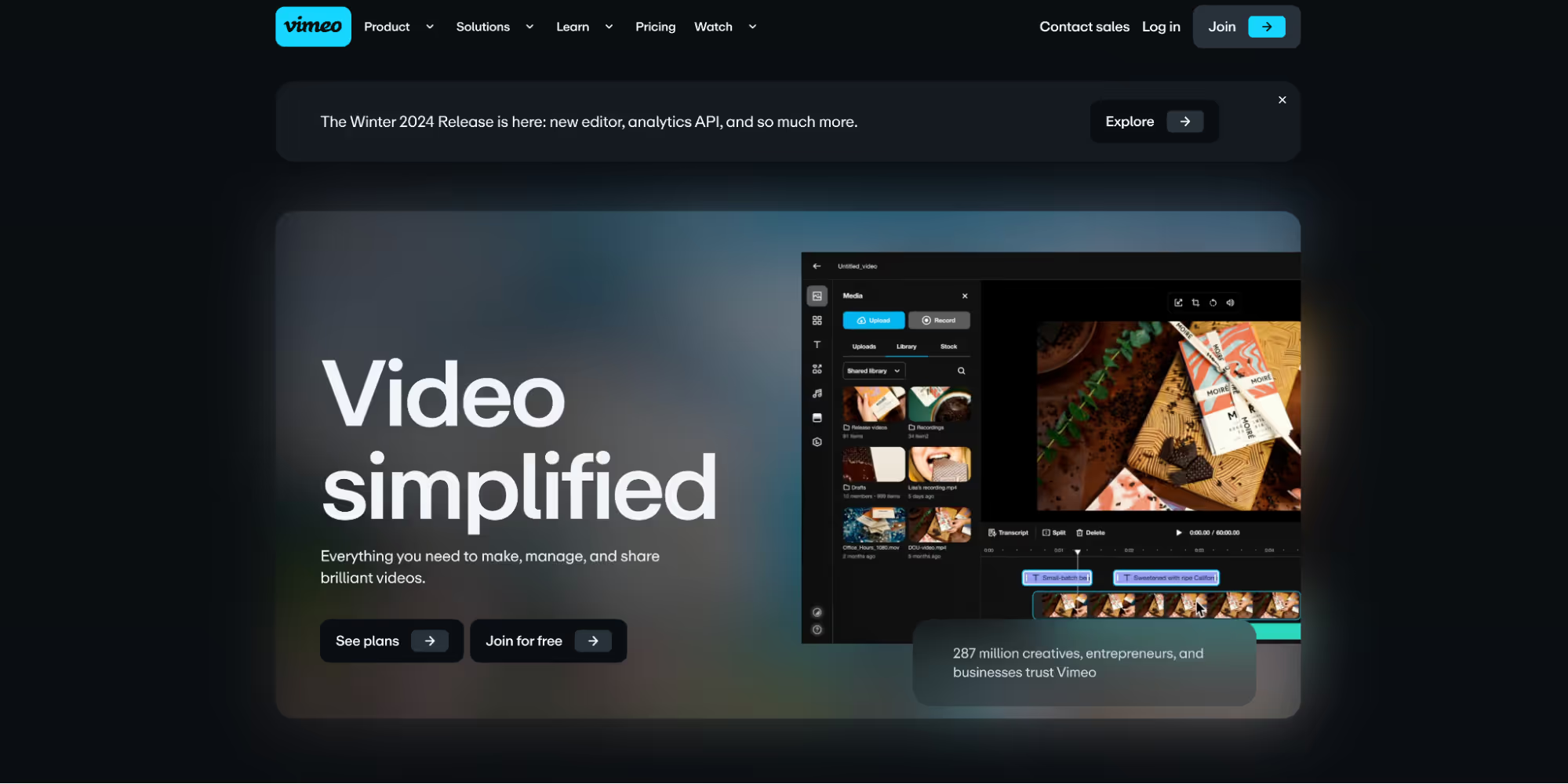

.avif)